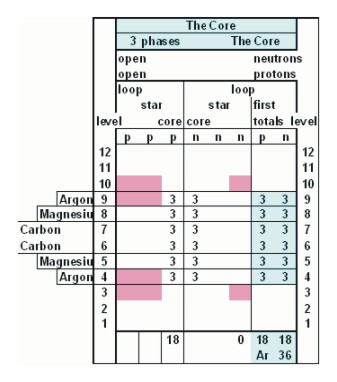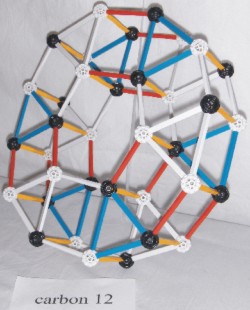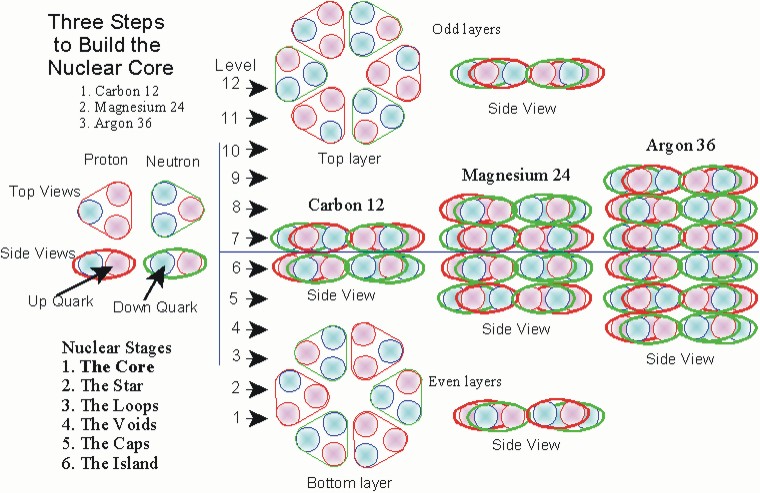

The Core
Hydrogen to Argon
The Core is the foundation upon which the rest of the nucleus is built around. After the protons and neutrons there are two structures that are primary within the nucleus, the Alpha Particle and the Carbon Ring.
Three of the carbon rings stacked form The Primal Core of the nucleus. There are three closed stages in building of the primal core phase. These closure stages and closure phases occur at points during the building of the nuclear structure where a form of the lattice structure is completed. Stages are intermediate and phases indicate a change in building the lattice. How this is executed will become clear as you study the nucleus.
The primary Core phase is composed of three sub stages.
- The first stage is the carbon12 ring.
- The second stage is the completion of a second carbon12 ring to form magnesium24.
- The third stage is the completion of a third carbon12 ring to form argon36. The completion of the third stage also completes the first core building phase.
The Primal Core stage is thus complete with the nucleus of argon36.
The ZOME models shown below are the three major completion sub stages the nucleus passes through while building the basic foundation of the nuclear core.



The illustration below provides a map showing the three major completion points passed through while building the basic foundation of the nuclear core.

As the nucleus grows it next grows via the Star phase. With the completion of the Star phase the Core is extended at both ends of the nucleus. The core is the only continuous structure in the nucleus. Growth of the nucleus always occurs symmetrically around the center and simultaneously on both ends of the nucleus.
The building blocks of the nucleus are protons and neutrons locked together by the strong force and arranged by the electrical and magnetic forces exerted by their constituent quarks. Each phase of nuclear growth occurs in steps of six protons plus six, eight or more neutrons, but always in steps involving an even number of neutrons.
An explanation of the growth tables is presented in the "illustrated models" section
and will help in the understand the direction that the path of stability follows as it is
described in the following sections,
Core: H1 - C12
Core: C12 - Mg22
Core: Mg24 - Ar36
Two methods of illustrating the hexagonal lattice model of the nucleus are used to help the reader visualize the model.
- The first method is based on drawings like those show above where the reader looks from the side and end of the nucleus.
- The second method is based on ZOME constructs.
